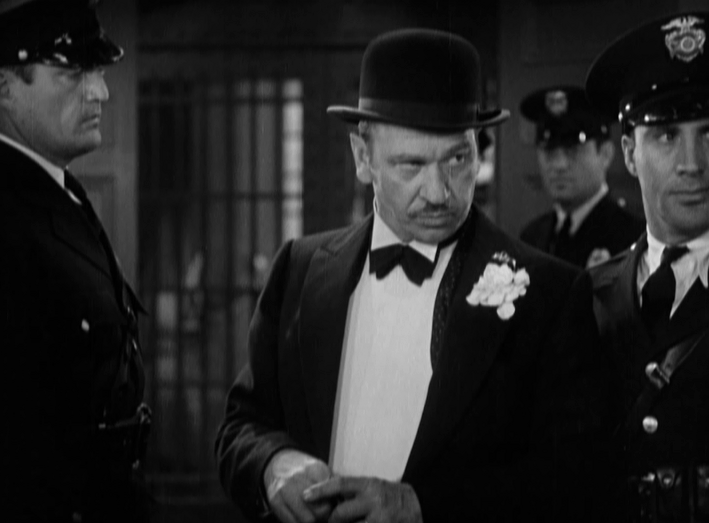
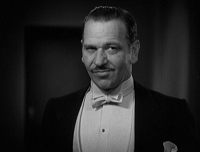 |
 |
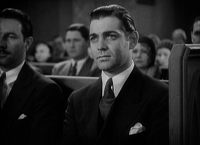 |
| Scorpio … Wallace Beery |
Newton … Lewis Stone |
Carl … Clark Gable |
 |
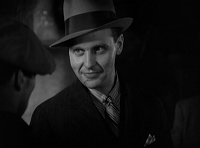 |
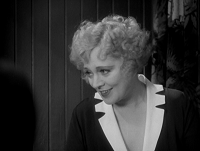 |
| Anne … Jean Harlow |
Johnny … Ralph Bellamy |
Peaches … Marjorie Rambeau |
Proof That It’s Pre-Code
- It’s a gangster pic with plenty of guns, booze, and broads. Murder is the name of the game, as well as paid seduction and corruption all the way to the mayor’s office.
The Secret Six: Less Than the Sum of Its Title
There’s one very noticeable problem with George Hill’s The Secret Six, and that is that the finished film is far less interesting than all of its elements.
First is the tile– The Secret Six. Who are the secret six? What secret they could hold? Look elsewhere and see Wallace Beery’s mug. Is he a member of the six? What’s his gang up to?
Well, they’re ripping off Warner Brothers, or at least giving it a shot. I usually don’t like to go into trivia or background in these reviews since the movies can speak for themselves, but in 1931 MGM had noticed how much money Warner Brothers had raked in with The Public Enemy with James Cagney and decided to give the genre a go themselves.
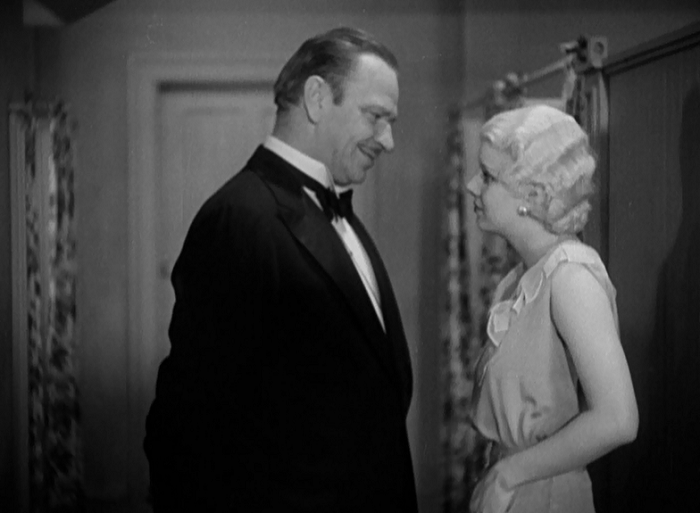
Hell, they even snagged Jean Harlow for this one too.
But while this film has a great pedigree– director George Hill and screenwriter Francis Marion were both behind the gritty The Big House from a year before, and few could play sympathetic yet menacing as well as Wallace Beery– The Secret Six is a mess of a picture.
And– again, I’ll be delving into the film’s background details, I apologize– it’s easy to understand why. The film is ostensibly the story of a man named Scorpio’s rise from working in a slaughterhouse to being the top of the underworld. But it’s also the story of a girl, and two men, and how those men fell in love with the girl, but one got her, but he’s a reporter and he crosses a gangster and realizes the girl set him up, but the girl was really in love with him all along and the other reporter nobly tries to help the other reporter not get murdered but then the other reporter…
Augh, I don’t care. This secondary plot line is impossible to give two hoots about, and was heavily (and noticeably) expanded upon by the request of MGM’s production head Irving Thalburg. Why? Because a pair of up and comers named Jean Harlow and Clark Gable inhabited two of these three roles. And, hey, I can’t say that they’re bad actors, the material they’re given is so much filler that it detracts from the film’s through line.
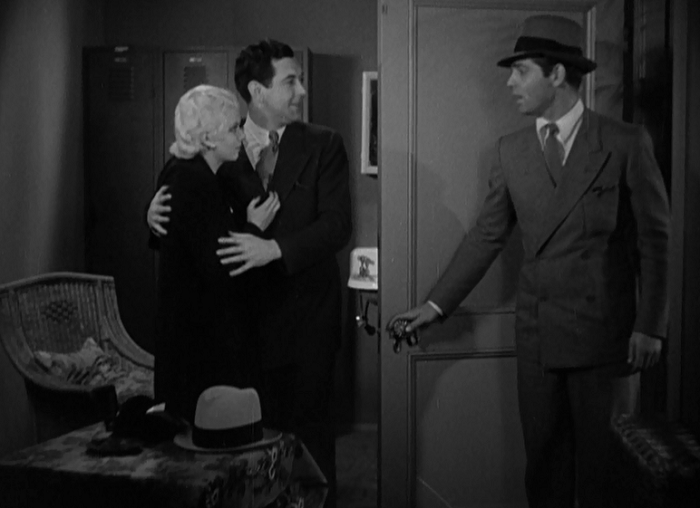
“Gangster picture? I thought this was a romantic comedy! GET MY AGENT!”
The main plot, which gets pushed further and further into the background, is far more enjoyable even if it becomes thinner and thinner. Scorpio is the kind of charming brute that Beery could play in his sleep. He starts off as the person who kills the cows in the slaughterhouse, until one day he meets up with his pal, Johnny, who tips him off as how to triple his income by bumping off the competitors for his bootlegging business.
Ralph Bellamy plays Johnny with a wicked grin and a fake scar that makes him a chilling, nasty creature. Once Scorpio starts becoming too productive in the gang, he decides to frame him for the murder of a rival boss’s kid brother. This results in a showdown that ends the film’s first act. It’s too bad; the slimy Bellamy is one of the movie’s strongest assets.
We still have lawyer Newton around, though, and his upper class alcoholic snobbery plays well against Scorpio’s blue collar grasps at respectability. The two are uneasy partners, and while Newton tries to guide Scorpio to follow a stratagem, Scorpio simply applies the rules of the slaughterhouse to the rules of crime: be dull, blunt, and painful.
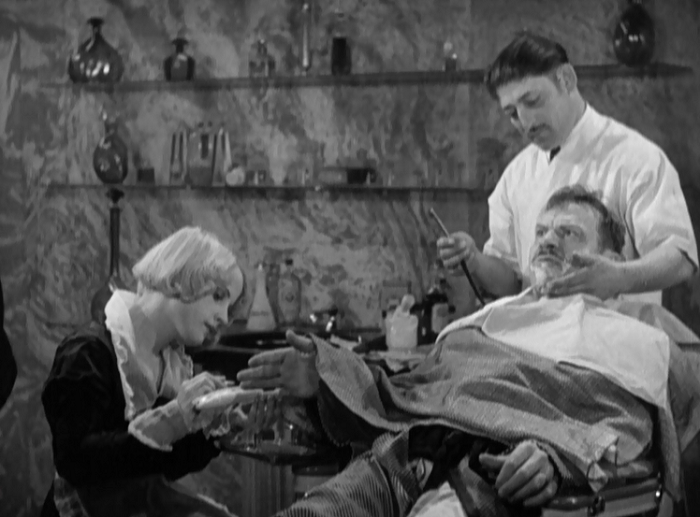
Heck, he even looks uncomfortable getting cleaned up.
Scorpio’s traits, unfortunately, never really cohere as the story spins off into the love triangle and trial. Scorpio’s most noticeable tick, always drinking milk rather than booze, gives him an animalistic quality. He’s a brute, a bully, who does what he does out of morbid pleasure and a desire for money. But while Beery is a presence, Scorpio never becomes as crafty as the audience wants. He’s pulled along by the plot more than ambition half the time.
By now you’re probably saying to yourself, “Sure, Danny, that sounds dull. But there’s a secret six in this film! What mystery do they hold?”
Well, bad news, guys. I present you your secret six:
The Secret Six is based on the true story about a group of rich vigilantes who helped take down mobsters in 1930’s Chicago. Here they appear in two scenes as a force that, thanks to information passed along to them via Carl, will finally be able to take down Scorpio. They wear goofy masks and issue indictments for things like tax evasion– fear them!
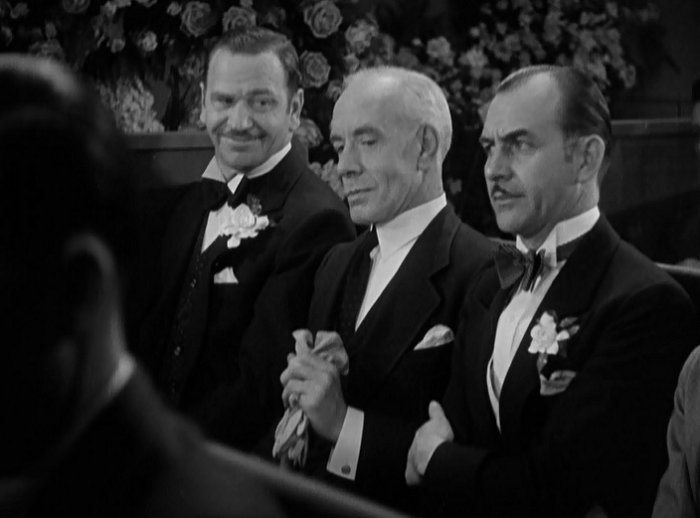
“They may have masks, but I’ve got a flower!”
Let’s talk about a few of the moments in the picture, since they really save the movie from the bin. The film has a decent chunk of action for 1930’s film, including a car chase, a murder, and an explosion just for fun. I know I’m the only person who would be impressed by this, but one scene shows Hank, running from Scorpio’s mob, going down into the subway. Mind you, I’m not sure Chicago ever had a subway, but it’s a treat to see such a large scale set.
Speaking of large scale, there’s two moments near the end that are worth pointing out. Once Scorpio is on trial near the end of the film, he orders an underling to sneak some guns into the courtroom– in case he gets a guilty verdict and needs to shoot his way out. When the verdict does come in, Scorpio has to make his way through a massive jeering crowd. George Hill at least imbued the picture with a sense of scale, and the rare the moments we get with Scorpio show what a dynamic picture this could be.
MGM’s take on the gangster picture still leaves quite a bit to desired, even with Beery’s wonderful double take and a pair of soon-to-be-stars working their butts off. But this never escapes the aura of being a few films too many slapped together, leaving everyone who’s a fan of anything a bit unsatisfied.
Gallery
Here are some extra screenshots I took. Click on any picture to enlarge!
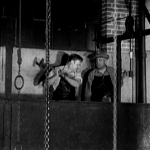
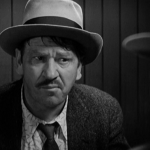
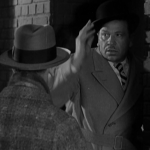
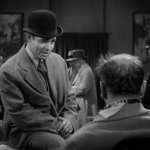
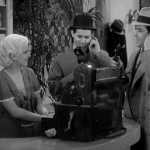
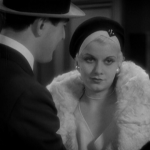
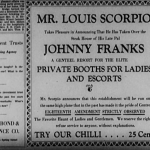
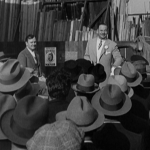
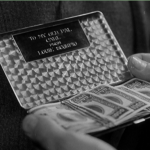
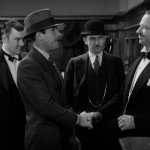
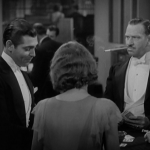
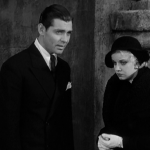
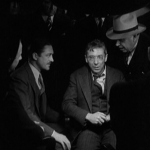
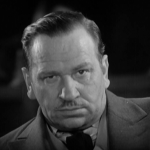
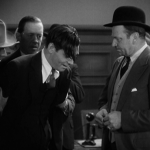
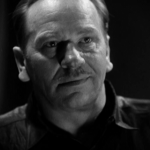
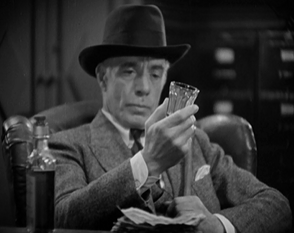
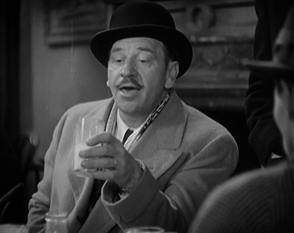
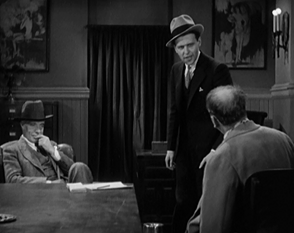

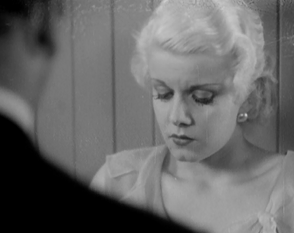
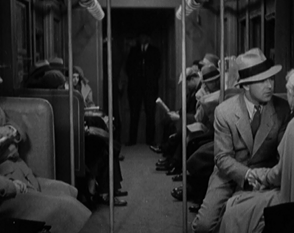
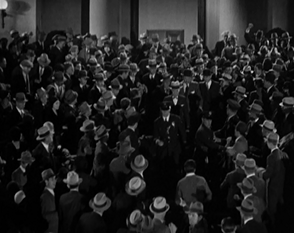
Trivia & Links
- Director George Hill and writer Frances Marion were married, and also worked together and with Beery on The Big House. Some of the sets from that movie make a return appearance here, too.
- At one point Johnny tells someone to buzz off with the phrase, “Go on, cut the applesauce!” Adding that one to my lexicon.
- I can’t think of the last movie I saw that used the word ‘rod’ as a euphemism for ‘gun’ quite as often, though those with dirty minds may be able to reinterpret it to another meaning pretty easily. Sample dialogue: “A lot of guys are superstitious about their rods!”
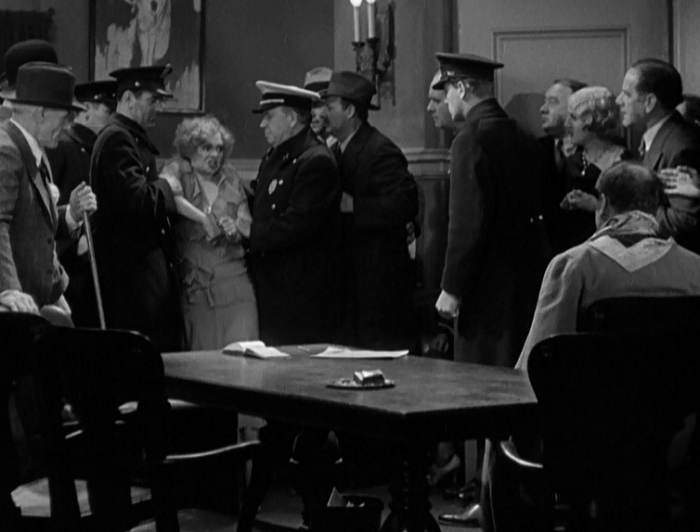
Look, I really love ya, Peaches. I want to shake your tree.
- Glenn Erickson, the DVD Savant, talks about the actors and about the difference in the ways that MGM handles this very Warner Brothers-esque material. He notes:
The movie never forms an opinion about what made Chicago such a lawless city. MGM won’t come right out and say that the police force was on the take, so no civic issues are really addressed. Rather than go Warners’ route, making Pre-code movies that questioned corruption and injustice, MGM opted for radical endorsements of vigilantism.
- Movie Diva discusses the inspiration for this film, the real life Secret Six, a group of rich vigilantes trying to drive the mob out of Chicago. She also explains the film’s lackluster ending, which serves as a reminder that censorship still existed even back in the Pre-Code era:
Marion planned Scorpio’s death to be poetic justice; trampled to death “in the muck of the stockyards” from which he had risen. The censors decreed a conventional “crime does not pay” solution. On the last page of her revised script she penciled resignedly, “the proverbial happy ending.”
- Two of the Three Movie buffs cover this with only enthusiasm for Gable and Harlow. Scott does point out a little historical irony, though:
By 1935, when Gable, Beery and Harlow all appeared onscreen together again in China Seas, all three of their names would be above the title, but Beery’s would be listed third behind Gable and Harlow.

A room with a view.
- Yes, there is a character named ‘Hank’ and the main character’s name is ‘Scorpio’. Hank Scorpio was the name of a character on “The Simpsons” that sought global domination; I’m willing to bet the names are just a coincidence, though.
Awards, Accolades & Availability
- This film appeared in the Wikipedia List of Pre-Code Films.
- This film is available on Amazon and Warner Archive, and can be rented from Classicflix.
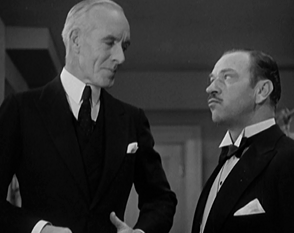 |
Comment below or join our email subscription list on the sidebar!Home | All of Our Reviews | What is Pre-Code? |

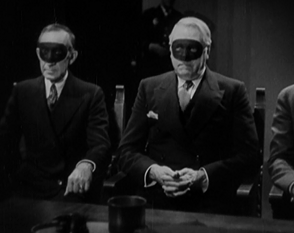
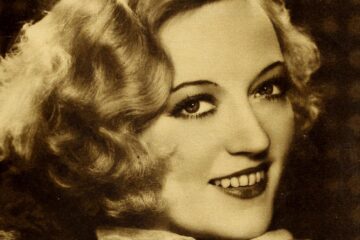
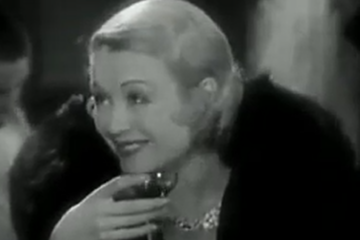
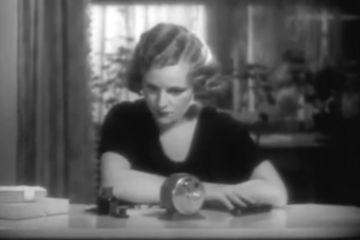
15 Comments
brianpaige · June 28, 2013 at 7:47 am
Oh man, I saw this years ago on TCM and it is total cheese. You nailed it in regards to the Secret Six guys being totally lame with those dorky masks and all. Almost made the film unintentionally funny. It does seem like the Gable/Harlow/Brown triangle gets a lot of random screen time in this film.
For a far better look at gangsters from the police point of view (also by MGM) check out Beast of the City. That movie along with The Big House showed that MGM could unleash some hard edged stuff in the early 30s.
Danny · June 28, 2013 at 8:36 am
That’s definitely on the list. Yeah, reading the behind-the-scenes stuff about more material being added for Harlow and Gable isn’t surprising; the film just seems lopsided. It needed to show why Beery’s character was such a monster, but instead just dances around it. A lot of potential mostly wasted.
Cliff Aliperti · June 28, 2013 at 11:00 am
I didn’t mind the cheesy masks so much, thought they were kind of cool actually, but I’d have liked these six not to have been so secret to us, you know, the folks viewing a movie called The Secret Six.
Wow, you must have disliked Johnny Mack Brown even more than I did, not even a mention!
Those gripes aside I’m absolutely with you on the “indifferent” rating. Heck, if it were on right now I’d watch again, but I won’t come away any more excited than I was last time.
Danny · June 28, 2013 at 5:45 pm
For a movie made to capitalize on the secret six, it sure is a shitty secret six film. Like I said in the review, I think everyone smashed together a bunch of ideas without regards to making them fit together, which leads to a really disappointing experience.
And Johnny Mack Brown registered as a non-entity. I had no idea he was more well known, and I’m sure I’ll run into him again.
justjack · June 28, 2013 at 12:46 pm
MGM just had a hard time with gangsters, didn’t they? Also, it may just be me, but it seems like MGM was a lot slower to improve their sound technology, whereas Warners/First National was on top of it right from the get-go.
I concur that this was kind of a mess, but also concur that it’s still watchable. And yes, the pan through the masked Secret Six was ludicrous. What, you wouldn’t know the guy from his suit, which he probably wore every day? And then you see the guy with the bow tie–you *know* he was “the bow tie guy” in the group, and when you got to him, mask or not, it would’ve had to be like, “oh, hey, Bernie.”
Loved loved loved Big House. And my memory of Beast of the City (Walter Houston, right?) is that it was good, too. So MGM could be gritty *sometimes**.
Cliff Aliperti · June 28, 2013 at 1:21 pm
Had to pop back to agree with @justjack on The Beast of the City – Harlow’s sexy dance plus action ending make that one a favorite here!
Danny · June 28, 2013 at 5:57 pm
Okay, I just bumped Beast of the City up in my queue– I’m looking forward to it!
And the secret six are hilariously underwhelming here. If you’re supposed to be some of the most powerful politicians in the nation, how much do you think the dinky masks will help?
brianpaige · June 29, 2013 at 3:30 pm
Yeah, Beast of the City is great stuff. It’s a little odd seeing the usually kind Jean Hersholt as the mobster, but it’s a film that focuses more on the cops. Might be Wallace Ford’s finest hour too…dude gets an onscreen romance with Harlow and they have chemistry no less.
When I saw The Secret Six these masked geeks reminded me of the concerned citizens in Scarface, if those people had these cheesy masks. They don’t DO anything. The crooks just turn on each other.
Danny · June 29, 2013 at 10:53 pm
The moral of both stories still seems to be to avoid cheesy masks.
vp19 · July 13, 2013 at 6:48 pm
Keep in mind “The Secret Six” is not set in Chicago, but a fictional city called “Centro” (a term I always associate with Syracuse, N.Y.’s transit system). Look at the ad from the screenshots for proof. So while Chicago may not have had a subway in 1931 (I believe some of its downtown stations were underground a decade later), the nonexistent Centro may have had one.
Danny · July 14, 2013 at 10:02 am
That’s a good point, I hadn’t caught that. Thanks for the insight!
Terence McArdle · March 9, 2015 at 12:39 pm
In general, the MGM gangster movies are a different breed from the Warner Brothers ones. Its subtle but most of the crime movies at Metro — Big House, Secret Six, Beast of the City, Penthouse — were produced by Cosmopolitan and reflected some more right wing views than Zanuck at WB. It’s subtle but I find a lot more judgement towards drinking in the MGM crime movies (The Big House involves someone sent up for drunk driving), a view of the police as inherently corrupt (Beast of The City) which in turn is used to justify vigilantism (The Secret Six). The vigilante angle in this movie is no accident even if almost comes off like a hokey afterthought. If you want to see Hearst’s political views in high relief, look no further than Gabriel Over The White House, basically a commercial for fascism. It’s a real eye opener.
Danny · March 11, 2015 at 12:02 am
Oh, I agree totally, and I like the way you connect those movies. MGM was definitely the most conservative of the studios, but also the cagiest. It would out sleaze the others (like Red Headed Woman) just to show it could.
Dean Speir · January 16, 2020 at 3:29 pm
Just caught up with this… I found the title compelling but the promise totally unfulfilled! Harlow and Gable were workman-like but the casting against type for Stone, Bellamy and Beery was disconcerting. (Think “Judge Hardy,” the guy who doesn’t get the girl, and “Awwww, shucks.”)
O, and Marjorie Rambeau, too… can’t forget her!
Vidor · January 20, 2020 at 8:17 pm
Clark Gable and Johnny Mack Brown in the same film in 1931. Talk about careers going in different directions.
Comments are closed.